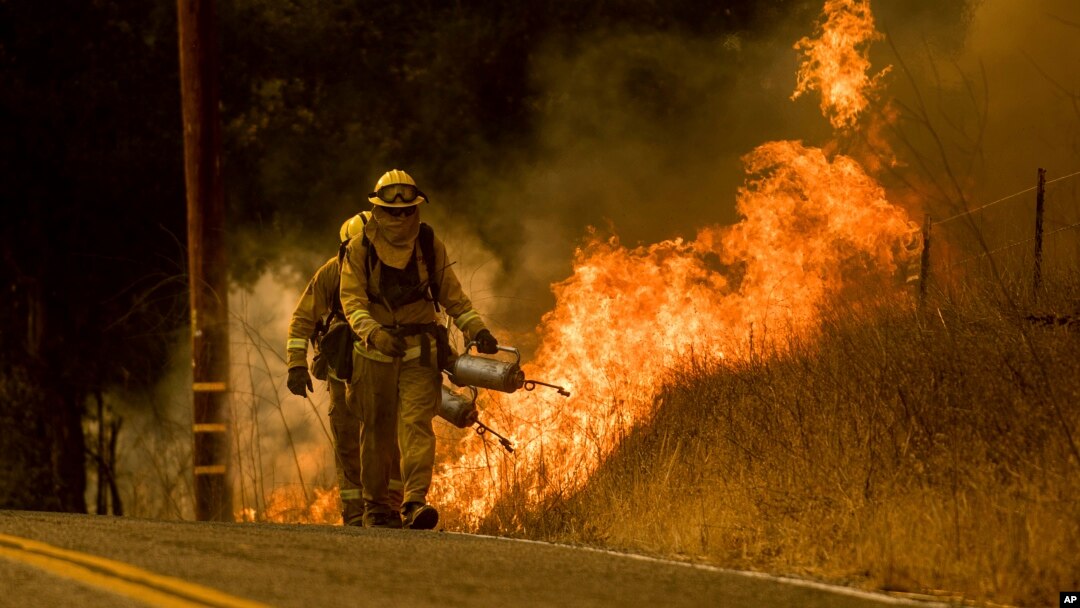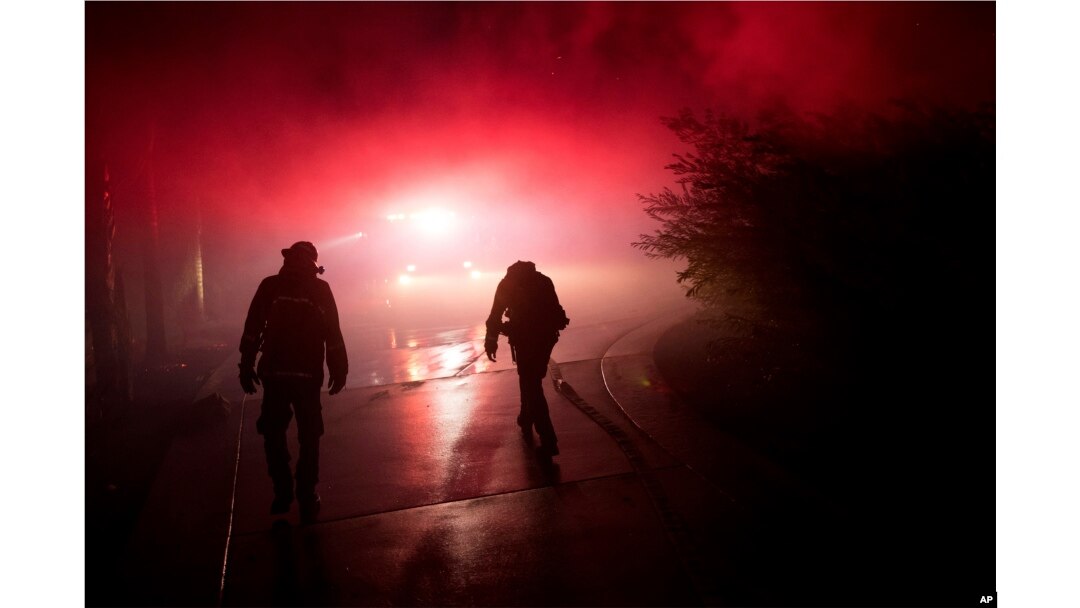Fire officials in the western U.S. state of California are focusing efforts on battling a wildfire northwest of Los Angeles that is already one of the largest and most destructive in the state's history.
The Thomas Fire has burned 930 square kilometers and destroyed 800 buildings in Santa Barbara County since it started a week ago. Authorities say the blaze is only 10 percent contained, and while firefighters have had some success attacking it from the air, it remains a dangerous fire that can be spread quickly by strong winds.
California's Battle Against Wildfires Continues
Cal Fire official Tim Chavez said at a briefing late Monday the area 160 kilometers northwest of Los Angeles is a "very difficult place to fight fire." He said the last time the same area burned in a wildfire was 1964, so the fuel there is more than 50 years old.
More than 5,700 personnel are involved in fighting the Thomas Fire, one of several burning in Southern California.
But crews have made significant progress in bringing the other fires, which are much smaller, under control.

An aircraft drops fire retardant as firefighters take advantage of light winds to attack the Lilac Fire, a fast-moving wildfire in Bonsall, California, Dec. 8, 2017.
The fires have forced more than 200,000 people to evacuate their homes. The number grew Sunday with more evacuations in Santa Barbara as the biggest fire in the region spread west. Authorities have been handing out face masks to help protect people from smoke inhalation, and a number of schools have been closed.
President Donald Trump responded to the fires Friday by issuing a federal declaration of a state of emergency for California, paving the way for federal agencies to help coordinate relief efforts.
Fires are not uncommon in Southern California this time of year, before the winter rains set in, when the vegetation is tinder dry and winds blast the region. This year, however, has been particularly bad for California fires because of dry, hot and windy conditions that would be extreme for any season, including the winter season that is just two weeks away.
Just weeks ago, wildfires that broke out in Northern California killed 44 people and destroyed 8,900 homes and other buildings.
Trump declared the fires an emergency, and ordered federal assistance.
"The White House extends its thoughts and prayers with everyone affected by the wildfires, and appreciation to the first responders who put their lives on the line every day,” the White House said in a statement.



